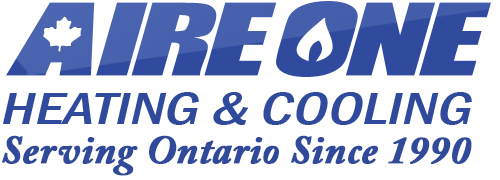
Is there a worse feeling than being cold inside your home? If it feels like all the sweaters and blankets in the house can’t keep you warm, your heating system may be underperforming. Having an up-to-date and fully functional furnace is critical to your family’s warmth, comfort, and health. What could be more important? When you’re cold it can feel like the winter will last an eternity, but with the right furnace heating system that doesn’t have to be the case.
The Most Common Types of Furnaces
Forced Air Heating Furnaces
This type of furnace is found in roughly two-thirds of Canadian homes. Air is heated in a furnace and distributed throughout the home through ductwork, which exits out of the registers. The heating source for this type of furnace varies between natural gas, propane, oil or electricity.
There are many advantages to this system, one being that it doubles as a cooling system in the summer. It’s generally inexpensive compared to other systems. Furthermore, the system allows air to be filtered, humidified or dehumidified if desired. This furnace can also attain the highest AFUE rating.
A few disadvantages of forced air systems include the need for installed ductwork which can take up space in your walls, regular maintenance, and the need to have the ducts cleaned periodically. Some people may find the find noisy and the system can potentially move allergens around your home, rather than removing them. With a forced air heating system, you’ll also need to replace your filters regularly.
Electric Furnaces
In essence, an electric furnace works similar to how a toaster functions. The wire coils heat up the air that passes through the system. It’s more popular in areas where natural gas isn’t readily available.
The benefits of this style are it’s 100% efficient, as no heat is lost through chimneys or vents. It’s also relatively a cost-effective solution to heating a home when natural gas isn’t an option. It is safe and doesn’t expel any by-products during the heating process. Electric furnaces are also quieter than gas systems.
On the downside, electricity is expensive. So even though this system doesn’t waste heat, it may cost substantially more. Another issue is when the outdoor temperatures are frigid, this system might struggle to maintain high indoor temperatures.
Oil Furnaces
This style is less popular and generally found in older homes. Oil burns much hotter than gas, it uses a specific burner to atomize the oil (convert to mist). A fan pulls the exhaust air through a heat exchanger which creates a draft, which allows the gases to exit out of your chimney.
As technology and engineering advance, there are little advantages for installing an oil furnace system. According to studies, many oil furnaces lose roughly 30% of the fuel’s energy by trying to maintain high temperatures to vent the gases. There is also the issue of rising oil costs and negative environmental sentiment from the impact of using fossil fuels.
If you’re looking at upgrading your furnace, remember that there are many factors that go into what type of furnace would work best for your home. To stay warm and safe this winter do your research, talk to professionals and ask questions. Most importantly, always have an expert install and conduct maintenance on the unit.

